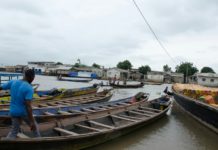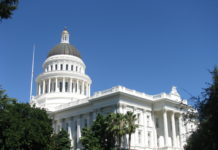Photo credit: DiasporaEngager (www.DiasporaEngager.com).
The report predicts that economic growth in sub-Saharan Africa will increase from 3.4 percent in 2023 to 3.8 percent in 2024. Nearly two-thirds of the countries in the region are expecting higher growth. It is anticipated that economic recovery will persist beyond this year, with growth projections reaching 4.0 percent in 2025. During the discussion that followed, participants posed various questions regarding international financing frameworks that can support renewed economic transformation, investment, and debt sustainability. While there was general consensus on the need for ongoing global financial architecture reforms, insightful discussions also shed light on how these reforms will be implemented. Several key themes emerged from the dialogue.
OPPORTUNITIES FOR GROWTH AND GLOBAL FINANCIAL ARCHITECTURE REFORMS
In order for Africa to achieve growth, it must make substantial investments in human capital and infrastructure. It needs to advance the AfCFTA protocols, especially by addressing non-tariff barriers that are currently hindering trade. Additionally, there is a need to reconsider the global financial architecture, particularly in light of the significant reduction in Overseas Development Assistance (ODA) and the increasing investment needs related to climate change.
Debt sustainability frameworks should be updated to account for the increasing significance of domestic debt. A more detailed approach that distinguishes between countries with strong market access and those heavily reliant on concessional financing would improve tailored policy recommendations. Additionally, sustainability frameworks should prioritize simplicity and transparency.
There has been progress in aligning monetary policy with economic fundamentals since the start of the pandemic. In 2022 and 2023, more than 20 countries experienced significant depreciations of more than 10%. This led to high costs of external debt, but the significant imbalances that were building up before the crisis are now improving. Several African countries are facing liquidity challenges, which can be a difficult area for many stakeholders to navigate. Despite taking tough decisions to improve their liquidity position, many countries have been hit by more shocks and are struggling to access finance again.
It is important to have a clear understanding of the tools and initiatives involved in reforming the global financial architecture, as well as alignment on objectives. One example is the Common Framework, which is often misunderstood because it does not allow for reverse flows, and debt deals can take a long time to materialize even with the best intentions. However, there is progress being made through the Global Sovereign Debt Roundtable (GSDR), which aims to address structural issues and establish “rules of the game” for the Common Framework, leading to a better shared understanding.
Selassie stressed the significance of African institutions and the crucial role that African leaders play in promoting reforms. The recent inclusion of the African Union in the G20 is extremely important, and it is essential to sustain progress in such global platforms. Additionally, the decision of the IMF Board of Executive Directors on rechanneling SDRs through the Use of SDRs in the Acquisition of Hybrid Capital Instruments of the Prescribed Holders is another significant stride towards reforming the global financial architecture.
AFRICAN COUNTRIES OVERCOME CRISIS WITH STRONG RESILIENCE
The recent World Bank/IMF Spring Meetings left a generally positive impression on growth prospects. According to the IMF, inflation is generally reverting, debt is stabilizing, and growth is returning based on recent data trends. However, there are significant variations across countries, especially in Africa. It is worth noting that the region has shown remarkable resilience through two major global shocks, despite limited macroeconomic support. This is particularly significant when compared to the unprecedented support provided by Western governments to industry and households during and after the pandemic crisis.
The story of this resilience needs to be highlighted more often. African governments have generally managed fiscal sustainability well during these crises, limiting primary deficits despite challenges such as the pandemic, climate change impacts, conflicts in Europe (and now in the Middle East), and disrupted value chains.
Despite some positive developments, significant economic challenges persist. Although debt levels have stabilized, debt servicing will remain a major burden for the foreseeable future. Additionally, many countries continue to face limited access to the bond market, and it will take years to recover the progress made in reducing poverty that was lost during the pandemic.
CHALLENGES IN DEVELOPMENT FINANCE: HEADING IN THE WRONG DIRECTION
The world is failing to fulfill its obligation to provide concessional financing where it is most needed to meet the development goals outlined in the SDGs. Selassie noted that this is devastating from a human point of view. Investments in health and education are declining for the youngest continent in the world, which could lead to wasted potential for a generation. This exacerbates inefficiencies and productivity losses for both African countries and the world.
With official development assistance (ODA) declining, African countries with desperate needs, such as those hosting a large number of refugees from conflicts, do not have access to adequate concessional or grant funding. As a result, they are forced to borrow for basic needs, which is unsustainable and highlights deficiencies in the global financial architecture. It is important to note that many developing countries also suffer from a severe lack of domestic savings, which is another significant factor in financing pro-poor budgets.
The promises of green finance to support mitigation, a just transition, and green industrialization in Africa have been disappointing. Financial commitments must be additional, not simply a repackaging of existing flows. Financing should also be structured and leveraged to lower the cost of borrowing for poor nations. Additionally, resources must be made available, not just promised. Actual disbursements from the various climate funds are necessary for billions of dollars to translate into trillions of dollars. It is crucial to remember that many developing countries suffer from a severe lack of domestic savings, which is also part of the problem.
Source of original article: ACET (acetforafrica.org).
The content of this article does not necessarily reflect the views or opinion of Global Diaspora News (www.GlobalDiasporaNews.com).
To submit your press release: (https://www.GlobalDiasporaNews.com/pr).
To advertise on Global Diaspora News: (www.GlobalDiasporaNews.com/ads).
Sign up to Global Diaspora News newsletter (https://www.GlobalDiasporaNews.com/newsletter/) to start receiving updates and opportunities directly in your email inbox for free.

































